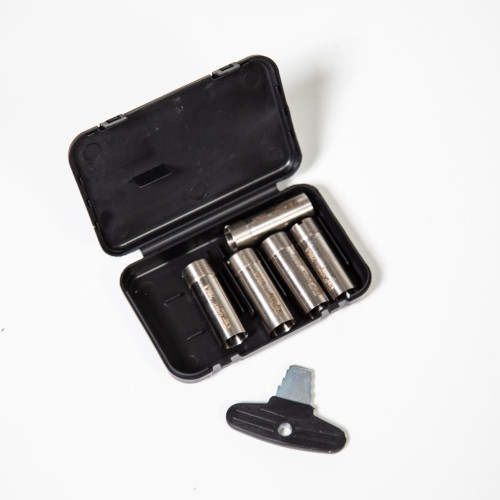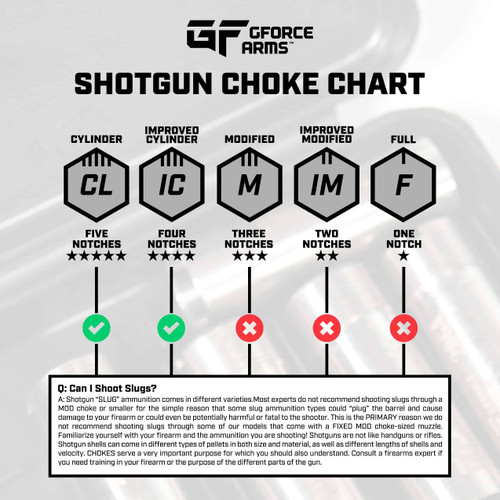For ideal shot patterns when bird hunting, the following is generally true for choke tubes and lead shot:
- Full (#1) – Tight barrel constriction; generally used for shots out to 45-50 yards
- Improved modified (#2) – further barrel constriction; generally used for shots out to 40 yards or more
- Modified (#3) – More barrel constriction; generally used for shots out to 30 yards or more
- Improved Cylinder (#4) – Little barrel constriction; generally used for shots out to 20 yards or more
- Cylinder (#5) – No barrel constriction; generally used for close range shots under 20 yards
Note: This is only a general guide for choke selection. In most hunting situations, target ranges will vary, and a improved modified (#2) or Modified (#3) are common choices for most hunting situations.
Understanding Chokes:
Our chokes come with a “notch” marking system. Look at the muzzle end of the choke and see how many notches it has. Here are the notch numbers and accompanying choke indication:
- 1 notch = Full
- 2 notches = Improved modified
- 3 notches = Modified
- 4 notches = Improved cylinder
- 5 notches = Cylinder
Other Questions and Answers about Chokes:
Q: Which chokes are recommended for slugs?
A: These chokes are recommended for slugs:
- 4 notches = Improved cylinder
- 5 notches = Cylinder
A cylinder choke is recommended for shooting rifled slugs in a smooth-bore barrel. Sabot slugs should only be shot through our fully-rifled slug barrels.
It is not safe to shoot slugs through chokes tighter than those listed here.
Q: Which chokes are recommended for steel shot?
A: These chokes are recommended for steel shot:
- 3 notches = Modified
- 4 notches = Improved cylinder
- 5 notches = Cylinder







